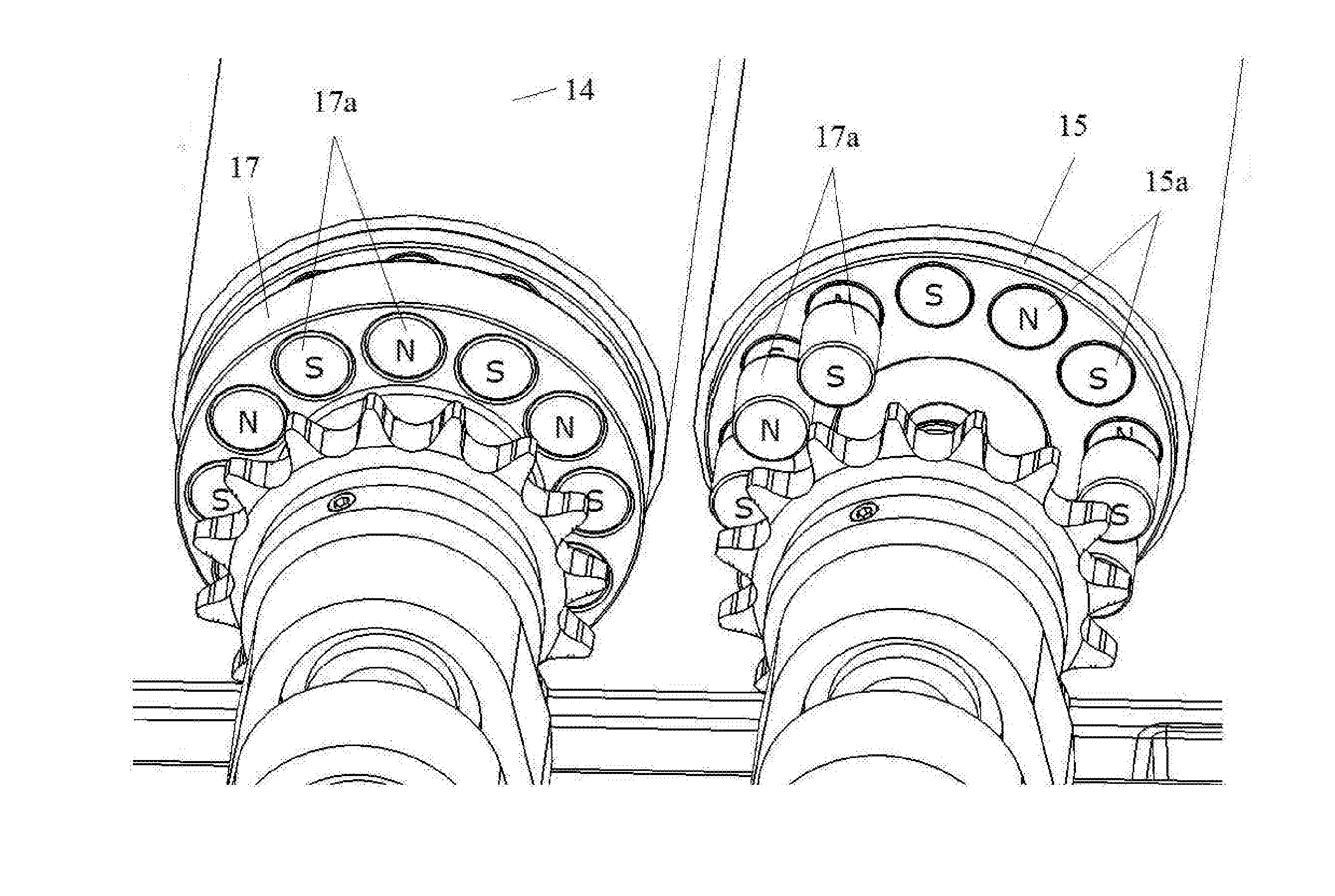Conveying Systems and Methods of Use
a conveyor and conveyor technology, applied in the direction of conveyor parts, rollers, roller-ways, etc., can solve the problems of contaminating the fruit or other product being conveyed thereon, requiring cleaning and repair, clogging or damage the system, etc., to minimize the collection of bacteria, fungus and other contaminants at the sidewalls of the roller bed, and prevent damage and wear on the driving system of the conveyor
- Summary
- Abstract
- Description
- Claims
- Application Information
AI Technical Summary
Benefits of technology
Problems solved by technology
Method used
Image
Examples
Embodiment Construction
[0065]Reference will now be made in detail to certain embodiments of the invention, examples of which are illustrated in the accompanying drawings. While the invention will be described in reference to these embodiments, it will be understood that they are not intended to limit the invention. To the contrary, the invention is intended to cover alternatives, modifications, and equivalents that are included within the spirit and scope of the invention as defined by the claims. In the following disclosure, specific details are given to provide a thorough understanding of the invention. However, it will be apparent to one skilled in the art that the present invention may be practiced without these specific details.
[0066]Referring to the drawings wherein like reference characters designate like or corresponding parts throughout the several views, and referring to FIGS. 1-18, it is seen that the present invention includes various embodiments of a conveyor bed having a magnetic rotor syste...
PUM
 Login to View More
Login to View More Abstract
Description
Claims
Application Information
 Login to View More
Login to View More - R&D
- Intellectual Property
- Life Sciences
- Materials
- Tech Scout
- Unparalleled Data Quality
- Higher Quality Content
- 60% Fewer Hallucinations
Browse by: Latest US Patents, China's latest patents, Technical Efficacy Thesaurus, Application Domain, Technology Topic, Popular Technical Reports.
© 2025 PatSnap. All rights reserved.Legal|Privacy policy|Modern Slavery Act Transparency Statement|Sitemap|About US| Contact US: help@patsnap.com



